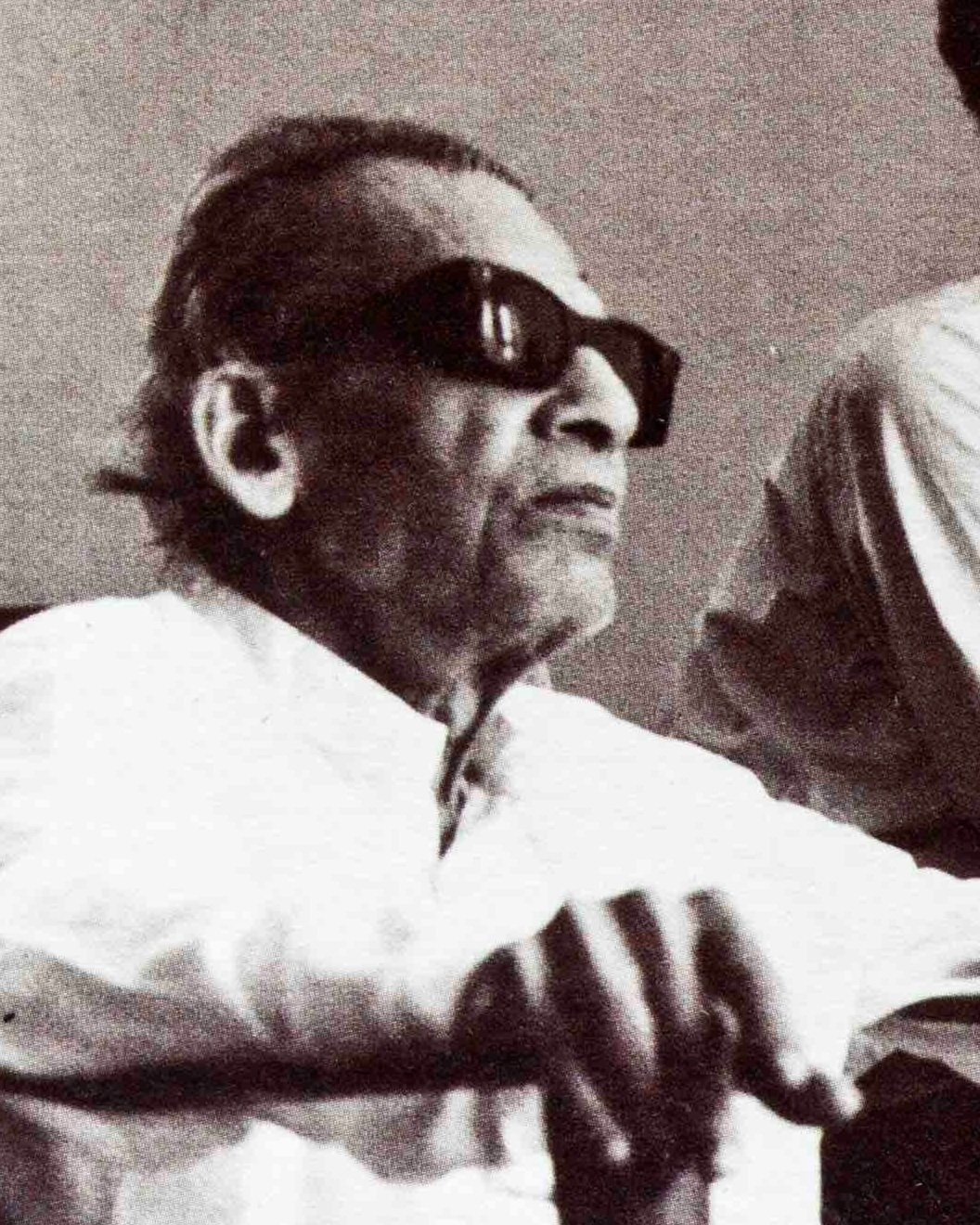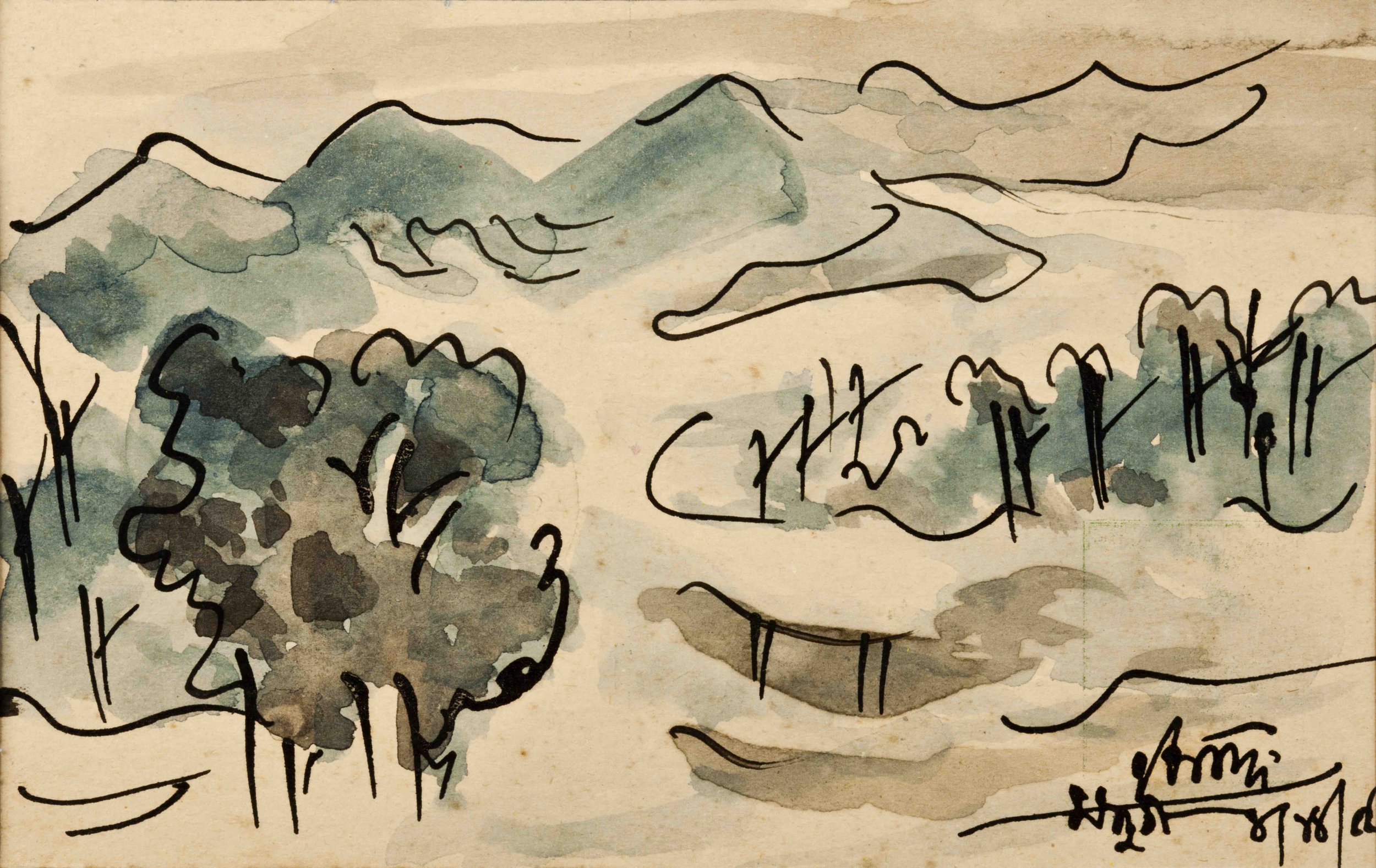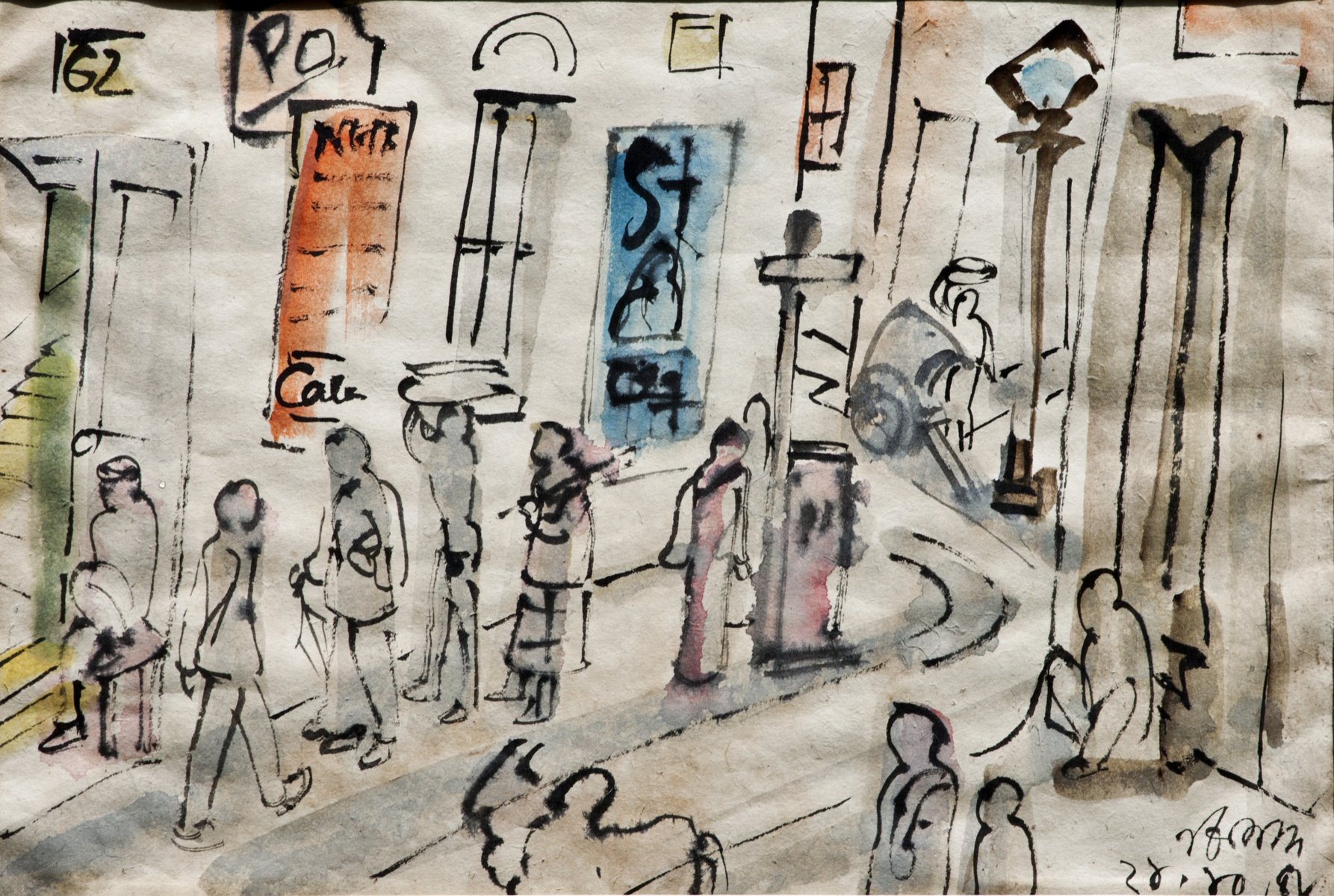Benode Behari Mukherjee (1904-1980)
Born in 1904, Benodebehari is remembered today as a distinguished artist and an inspiring teacher. From early life, Benodebehari had to struggle with impaired vision and the threat of losing his eyesight completely. As a child, his education in Kolkata was hampered because of his poor eyesight and he was sent to Santiniketan Brahmacharya Vidyalaya. His passion for the visual arts took him to Kala Bhavana, in Santiniketan where he later joined its faculty and played an integral part in making it into one of the most important institutions for the study of art. He was surrounded by pristine nature which found a place later in his landscape paintings.
Benodebehari’s style of work was simple and ideological. A student of Nandalal Bose, he renounced overt symbolism of mythological descriptions. Instead, he turned to simple representations of his immediate surroundings. Even these reflect everyday life in Santiniketan. Benodebehari worked on different media: tempera, watercolour, oil, woodcut, paper collage, pastel and others. He classified his forms on the basis of the carefully constructed horizontal axis, vertical axis, diagonal axis and curvilinear axis. The postcards demonstrate the usage of all these four kinds of lines. Benodebehari used a complex fusion of idioms drawn from western art as well as from the orient. Far eastern traditions are evident in his calligraphy and in the wash technique he used. The pressure of his brush strokes and ink distribution on handmade paper are remarkable
From 1940 till 1956 when he was losing his vision completely; forms, contours and lines gained immense priority in his works in contrast to the erstwhile optical sensation. He created beautiful pictorial abbreviations. The card sketches presented in this exhibition clearly show this inclination. City streets, houses, and narrow lanes find a geometric placement in Benodebehari’s works.
The artist passed away in 1980.
Benode Behari Mukherjee | Untitled | Ink and brush | 3.5 x 5.25 in
Benode Behari Mukherjee | Composition | Woodcut | 5 x 8 in
Benode Behari Mukherjee | Landscape | Ink & brush on paper | 3.5 x 5.5 in
Benode Behari Mukherjee | Cityscape | Watercolor on paper | 8 x 12 in
Benode Behari Mukherjee | Landscape | Watercolor on paper | 10.75 x 18.75 in
Benode Behari Mukherjee | Composition | Etching | 4 x 4 in







